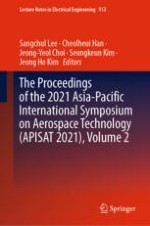2023 | OriginalPaper | Chapter
A Study on Path Planning Using Bi-Directional PQ-RRT* Algorithm and Trajectory Tracking Technique Using Incremental Backstepping Control
Authors : An Jung Woo, Ji Won Woo, Jun-Young An, Chang-joo Kim
Published in: The Proceedings of the 2021 Asia-Pacific International Symposium on Aerospace Technology (APISAT 2021), Volume 2
Publisher: Springer Nature Singapore
Activate our intelligent search to find suitable subject content or patents.
Select sections of text to find matching patents with Artificial Intelligence. powered by
Select sections of text to find additional relevant content using AI-assisted search. powered by
